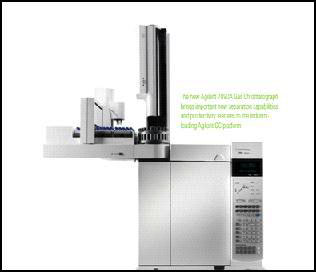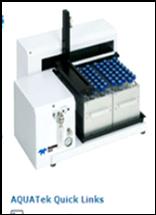Purpose
The VOLATILE ORGANICS SECTION performs the analyses of volatile and semi-volatile organic compounds in drinking water, wastewater, groundwater, hazardous wastes, soils, sediments, sludges, leachates, and in consumer products for possible tampering or adulteration. This laboratory also performs the analyses of haloacetic acids in drinking water. Analysis of multi-media samples is carried out using purge and trap introductory systems attached to capillary column gas chromatographs equipped with electron capture detectors (GC/ECD) or mass spectrometers (GC/MS).
Instrumentation
Analysis of multi-media samples is carried out using capillary column gas chromatographs equipped with mass spectrometers (GC/MS) and Purge and Strap (P/T) system.
- Agilent GC_MS
- Thermo GC-MS
- Agilent GC-ECD
Gas Chromatograph – Mass Spectrometer

Gas chromatography–mass spectrometry (GC-MS) is a method that combines two techniques to form a single method of analyzing samples. Gas-chromatography separates the elements of a sample while mass-spectrometry characterizes each element, making it possible to qualitatively and quantitatively analyze samples. The GC-MS is a system tailored to meet the rigorous demands for scientist in both routine analysis and research.
Purge and Trap System (P/T)

The Purge and Trap is chromatographic sample introduction technique used to extract volatile organic compounds (VOCs) from a solid or liquid matrix for testing within the GC system.
Elements Routinely Analyzed
* Glass vials must have Teflon-lined septum caps; glass bottles must have Teflon-lined caps NA = not applicable
Potential Health Concerns and Environmental Effects
The health effects of volatile organic compounds vary according to the compound, ranging from being highly toxic to having no known health effects. Harmful VOCs are usually not acutely toxic, but can introduce long-term health effects. The effects will depend on the nature of the volatile organic compound, the level of exposure, and the duration of the exposure. Research into VOCs and their effects is difficult because low concentrations slow the development of symptoms.

